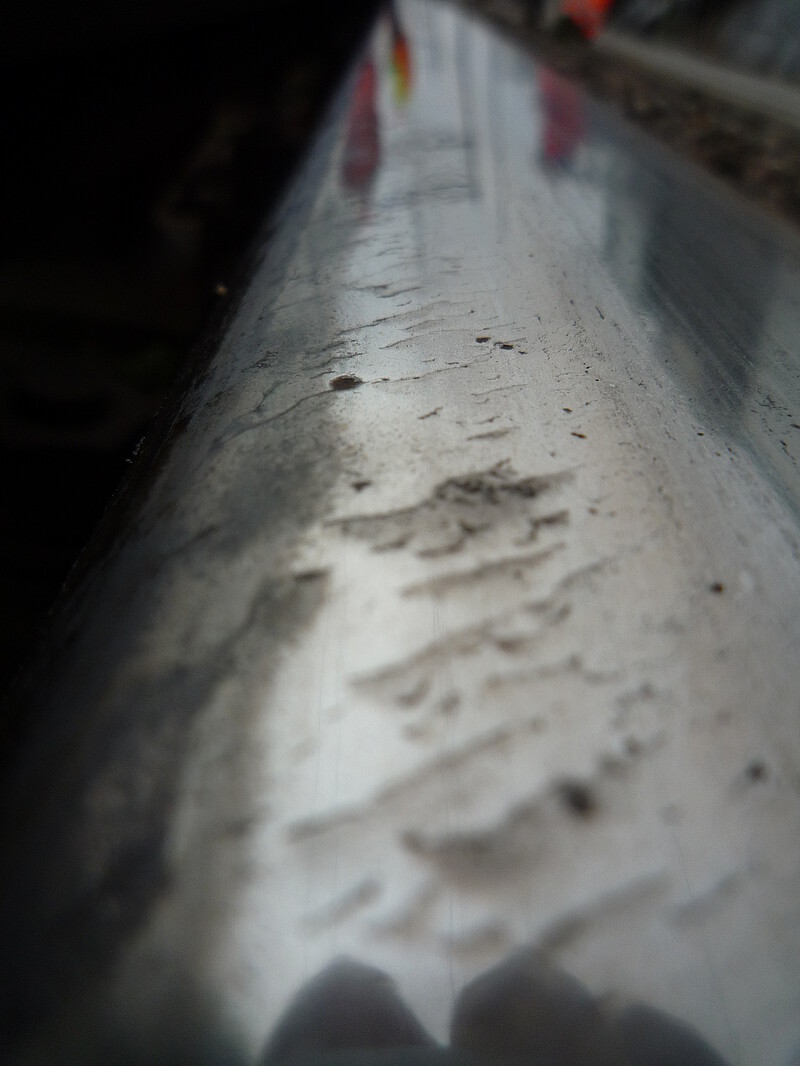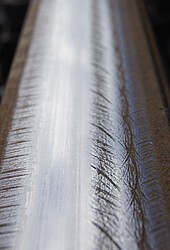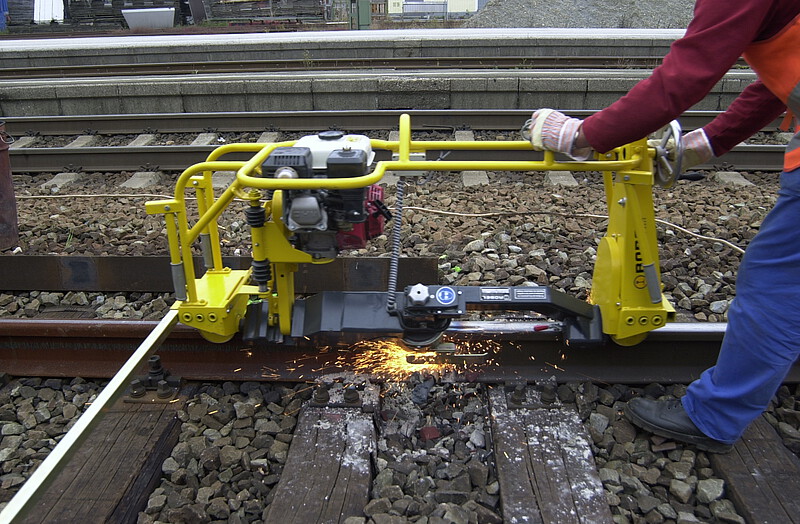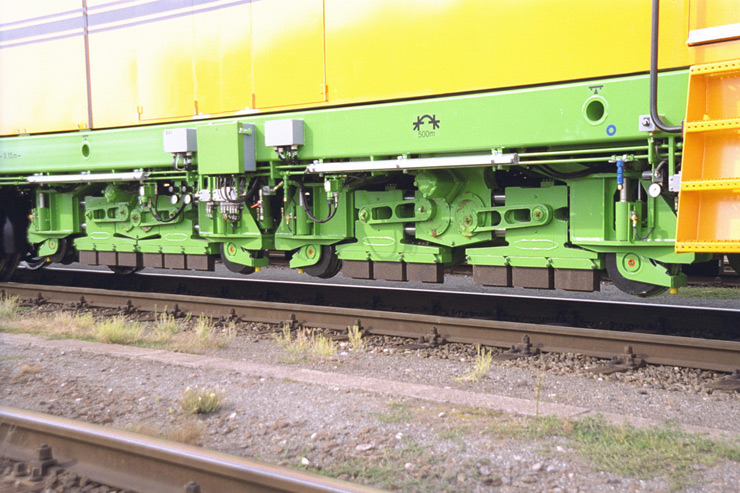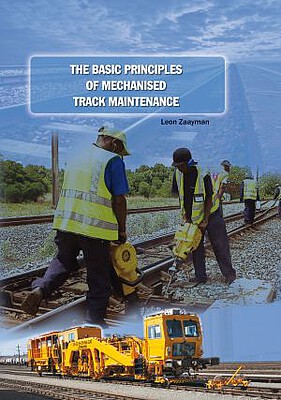Rail rectification
The wheel-rail contact has special significance in railways. The wheel loads are transferred to the rail in an area that is hardly as big as a finger nail. The stresses arising at this contact surface lead to regular wear problems, which bring difficult challenges to the engineers around the world. Driven by ever-increasing powers and modifications to locomotives (massive slip control), growing axle loads and increasing speeds, steelmakers throughout the world have developed profiles and steel grades to reduce rail wear and increase durability. Thus, the correct treatment of the rail surface is of particular importance. The preventive planning of rail surface treatment can greatly increase the life of the rail and reduce noise emissions. An impressive example for the success of such preventive measures is shown by DB (Germany), who increased the amount of rail treatment by 168 % from 2010 to 2013. In the same period, the total cost for rail treatment and rail replacement was reduced by
47 %.[1] The intensification of the rail surface treatment led, contrary to expectations, to a reduction in costs, caused mainly by the sharp decline in rail replacement.
Rail grinding, rail milling, rail planing, and in special cases build-up welding, are used for the treatment of the rail surface. The most common type of surface treatment is grinding, with regard to the type of grinding head independent of the process the following groups can be differentiated:
Grinding new rails[2]
The grinding of new rails is carried out shortly after they have been installed in the main line, in order to remove micro-bumps and the sinter produced by the rolling process. This not only reduces the formation of corrugations and waves by about half, but also increases the service life of the rails.
Preventive grinding
Preventive grinding describes the elimination of an error before it reaches undesirable dimensions. This can occur when the rails reach the threshold when attention is required for safety reasons, but can also occur when they reach individually defined quality values which do not impact the operational safety. This prevention can be performed in different ways. The well-known high-speed grinding process grinds large lengths of the route network at high speed. The main goal is wear prevention. The desired removal of metal is generally controlled by the number of trains passing. It is also possible to use the comparable rotary grinding procedure. The removal can be controlled individually (0.02 to 0.15 mm, depending on the machine composition), where the work output is significantly lower than high-speed grinding. Preventive rail grinding mainly deals with rail surface defects and not reprofiling. The maintenance planning can be condition-based or time-based.
Corrective grinding (maintenance grinding)
Corrective grinding describes the reprofiling and/or the concentrated treatment of acute problems or damage. The grinding is carried out depending on the condition of the rails and is done reactively to the occurring wear.
Grinding of welds
After the successful welding of two rails the welded joint must be heat treated after the shearing and cooling which is generally done with hand-held rail head grinding machines. These generally use conventional cup wheels.
Grinding to reduce noise
Errors in the rail surface excite the wheelset and have a negative influence on the rolling noise. Especially in built-up areas, the resulting noise often disturbes nearby residents. In Germany, there has been increased public resistance to some lines and railway operations in recent years. As a result, it has been necessary to take active measures (conversion of brake pads or production of the rail surface) or passive measures (noise protection walls or noise protection windows). Investigations showed the advantages of oscillating rail grinding. This allows the production of an excellent rail surface and shows significant potential in the reduction of rolling noise.
You can find suitable specialist literature to the topic here:
The Basic Principles of Mechanised Track Maintenance
This book is dedicated to the many people involved in the day to day planning and performance of track maintenance activities. Providing a practical approach to everyday challenges in mechanised track maintenance, it is not just intended as a theoretical approach to the track system.
Railways aim at transporting people and freight safely, rapidly, regularly, comfortably and on time from one place to another. This book is directed to track infrastructure departments contributing to the above objective by ensuring the track infrastructure’s reliability, availability, maintainability and safety – denoted by the acronym RAMS. Regular, effective and affordable track maintenance enable RAMS to be achieved.

